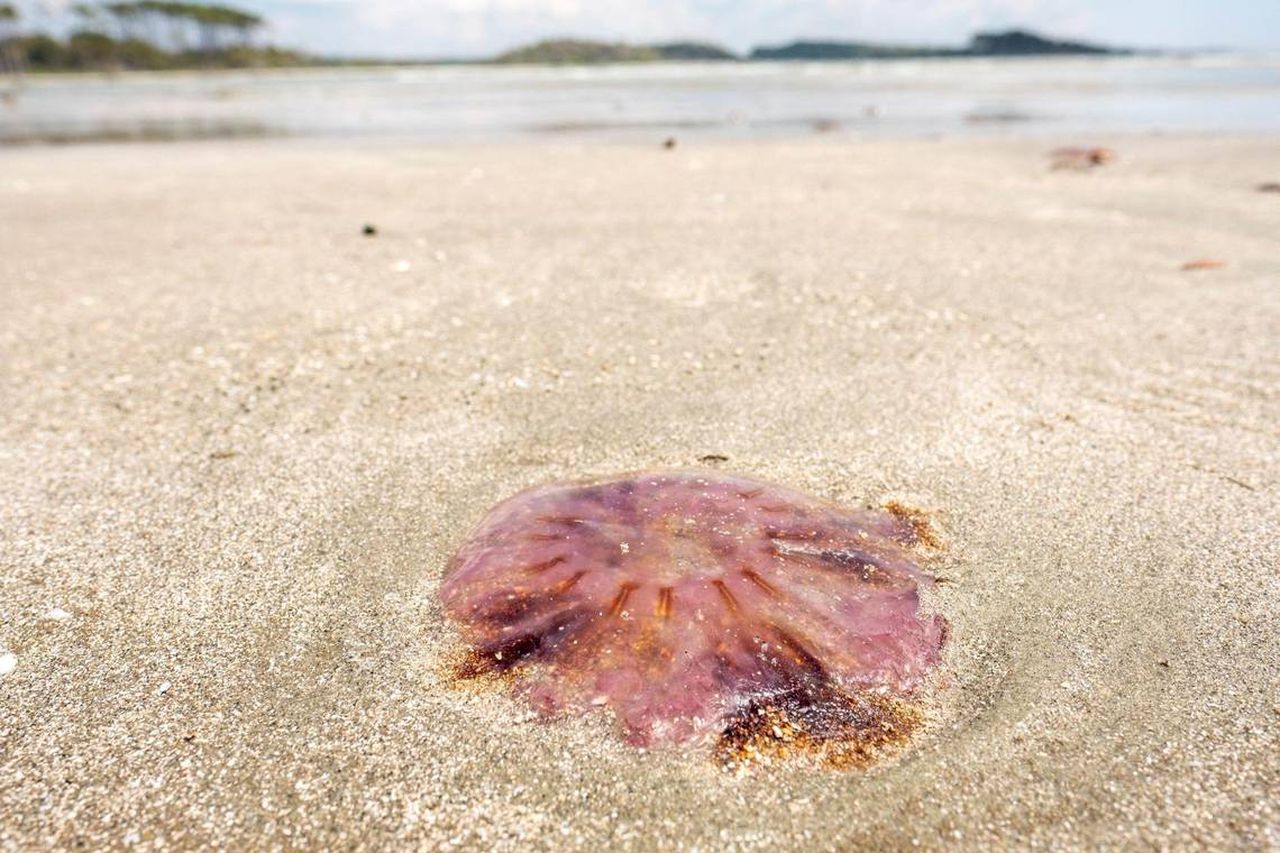What to do if you are stung by a jellyfish? Donât pee on the sting
Erin Jackson was recently walking on the shore in North Myrtle Beach, S.C. when the luster of a washed up sea creature caught her eye.
The pink-and-purple translucent sheen was from a Portuguese man o’ war — one of the ocean’s most distinctive creatures commonly mistaken as a type of jellyfish.
Here are a few things to know about jellyfish and their close cousins, the man o’ war, which globally sting about 150 million people a year.
1. Let’s get it out of the way. Don’t pee on that sting.
Perhaps one of the greatest urban myths of all time, urinating on a jellyfish sting actually makes things worse by releasing even more venom into the victim.
The Cleveland Clinic, which Myrtle Beach officials referenced in a recent Facebook post addressing jellyfish safety, offers these tips to alleviate the pain safely.
— Remove any tentacles immediately, but don’t rub the affected area. That stimulates the venomous barbs even more.
— Use only seawater to help remove the barbs.
— Gently scrape the affected area with the edge of credit card or similarly shaped plastic object to remove all barbs
— Apply vinegar or rubbing alcohol to the affected area. That cuts down on pain and helps release any toxins.
— Entering a hot bath or shower with water temperatures between 104 and 113 degrees can also help, if you’re able to tolerate it.
2. Most jellyfish found are harmless.
Researchers estimate there could be up to 300,000 species of jellyfish — a staggering figure for an organism with no brain, heart or lungs. Most of those are harmless, but there are a few types that swimmers should be on the lookout for.
Cannonball
Although they don’t much more than 10 inches in diameter, cannonball jellies cluster near the coast and in estuaries and can slow down commercial fishing by clogging nets and damaging nets.
Lion’s Mane
Typically active in colder months, it’s saucer-shaped and has up to eight clusters of arms. “Pain is relatively mild and often described as burning rather than stinging,” S.C. DNR’s website says.
Sea Wasp
Also called the box jelly due to its cube-shaped bell, sea wasps are the most venomous type of jellyfish found, with it’s sting sometimes being severe enough to require hospitalization.
Man ‘o war
While mostly found in tropical climates, wind and ocean currents can send them into coastal areas.
Sting symptoms include severe shooting pain described as a shock-like sensation, and intense joint and muscle pain, accompanied by headaches, shock, collapse, faintness, hysteria, chills, fever, nausea and vomiting.
“Initial contact with a man-of-war may produce only a small number of stings. But trying to escape from the tentacles may greatly increase stings. Severe stings can occur even when the animal is beached or dead,” S.C. DNR warns.
3. Sharks get the headlines, but jellyfish are notorious subterranean villains.
The National Ocean Service puts jellyfish on its list of the most hazardous seafaring creatures, joining sea urchins, lionfish, stingrays and sharks.
“These squishy critters injure beach-goers far more often than any other type of sea life. Since a sting from jellyfish tentacles can prove painful even when the creature is dead, smart beach-goers everywhere give them a wide berth both in the water and along the shore,” the agency says on its website.
___
(c)2023 The Sun News (Myrtle Beach, S.C.)
Visit The Sun News (Myrtle Beach, S.C.) at www.thesunnews.com
Distributed by Tribune Content Agency, LLC.
